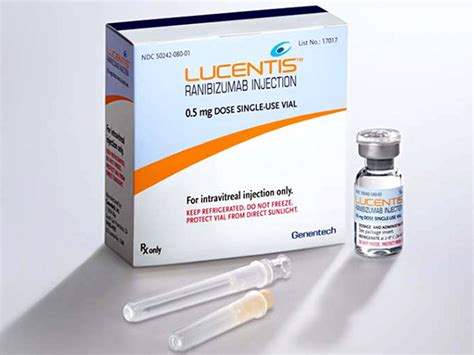Lucentis Eye Treatment
Lucentis FAQ
What is Lucentis (ranibizumab)?
Lucentis (ranibizumab) is a prescription drug that’s used for eye conditions such as macular edema. Lucentis comes as a liquid solution that’s given by injection into the eye. Lucentis is prescribed to help improve vision in adults with: Wet age-related macular degeneration (AMD).
How does Lucentis work?
Lucentis is given as an injection into your eye. Your doctor will use a medicine to numb your eye before giving you the injection. You will receive this injection in your doctor's office or other clinic setting. For a short time after your injection, your eyes will be checked periodically to make sure the injection has not caused any side effects.
Can Lucentis cause death?
Although there were only few fatal events which included causes of death typical of patients with advanced diabetic complications, these events may be caused by LUCENTIS. Some LUCENTIS patients have serious side effects related to the injection. These include serious infections inside the eye, detached retinas, and cataracts.
What is Lucentis ophthalmology?
Your ophthalmologist is committed to protecting your sight. Lucentis is the brand name for ranibizumab, a drug injected into the eye to slow vision loss in people who have “wet” age-related macular degeneration (AMD).
Lucentis References
If you want to know more about Lucentis, consider exploring links below:
What Is Lucentis
- https://www.drugs.com/lucentis.html
- https://www.aao.org/eye-health/drugs/lucentis
- https://en.wikipedia.org/wiki/Ranibizumab
- https://www.healthline.com/health/drugs/lucentis
- https://www.medicalnewstoday.com/articles/lucentis
- https://www.lucentis.com/
- https://www.ema.europa.eu/en/medicines/human/EPAR/lucentis
- https://www.health.novartis.co.uk/medicines/ophthalmology/lucentis
- https://www.dgft.nhs.uk/leaflet/ranibizumab-lucentis-for-age-related-macular-degeneration-armd/
Lucentis Information
Explore Related Topics
Enhancing Diabetic Retinopathy Treatment with Nanotechnology: A Brighter Future?
Can nanotechnology innovations revolutionize the treatment of diabetic retinopathy?
